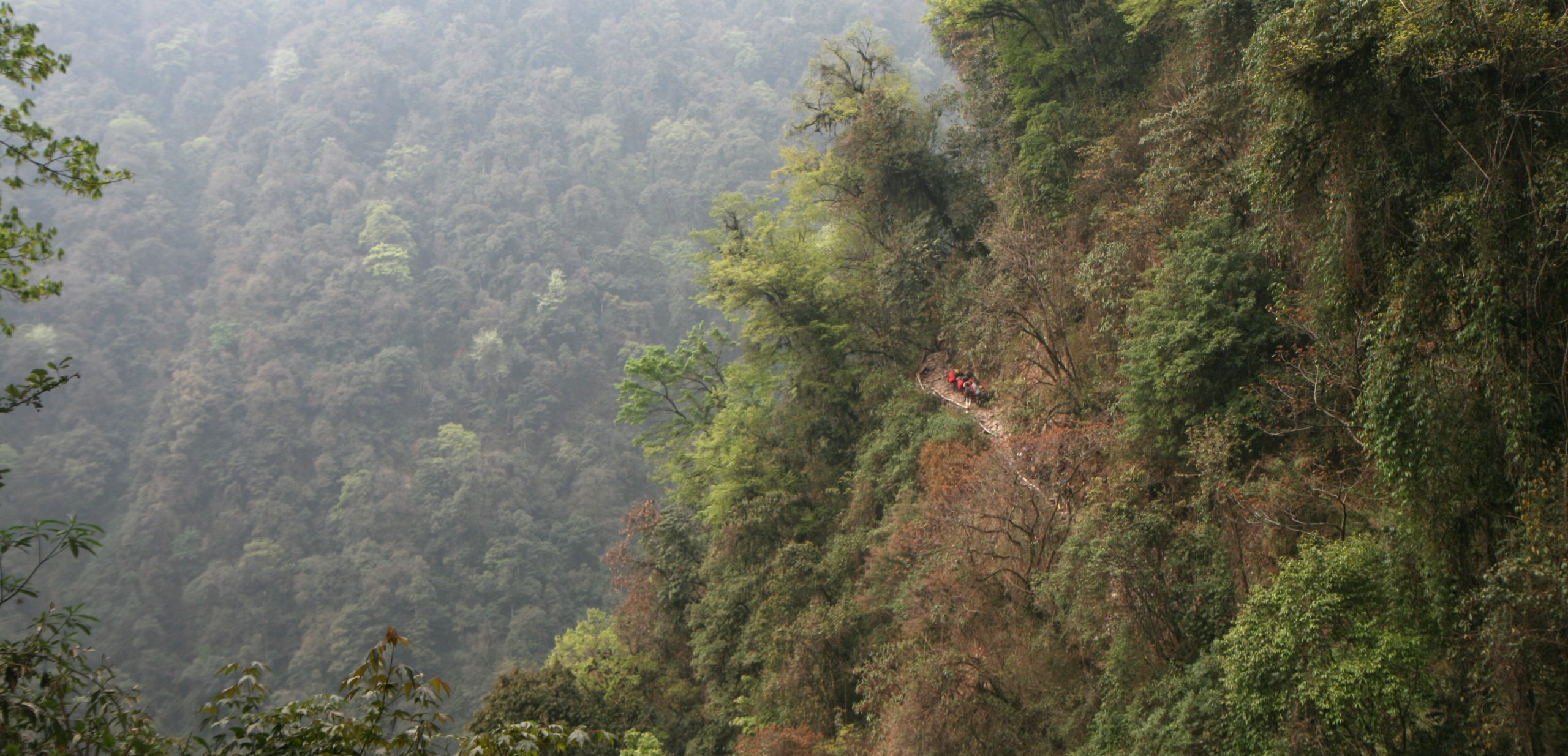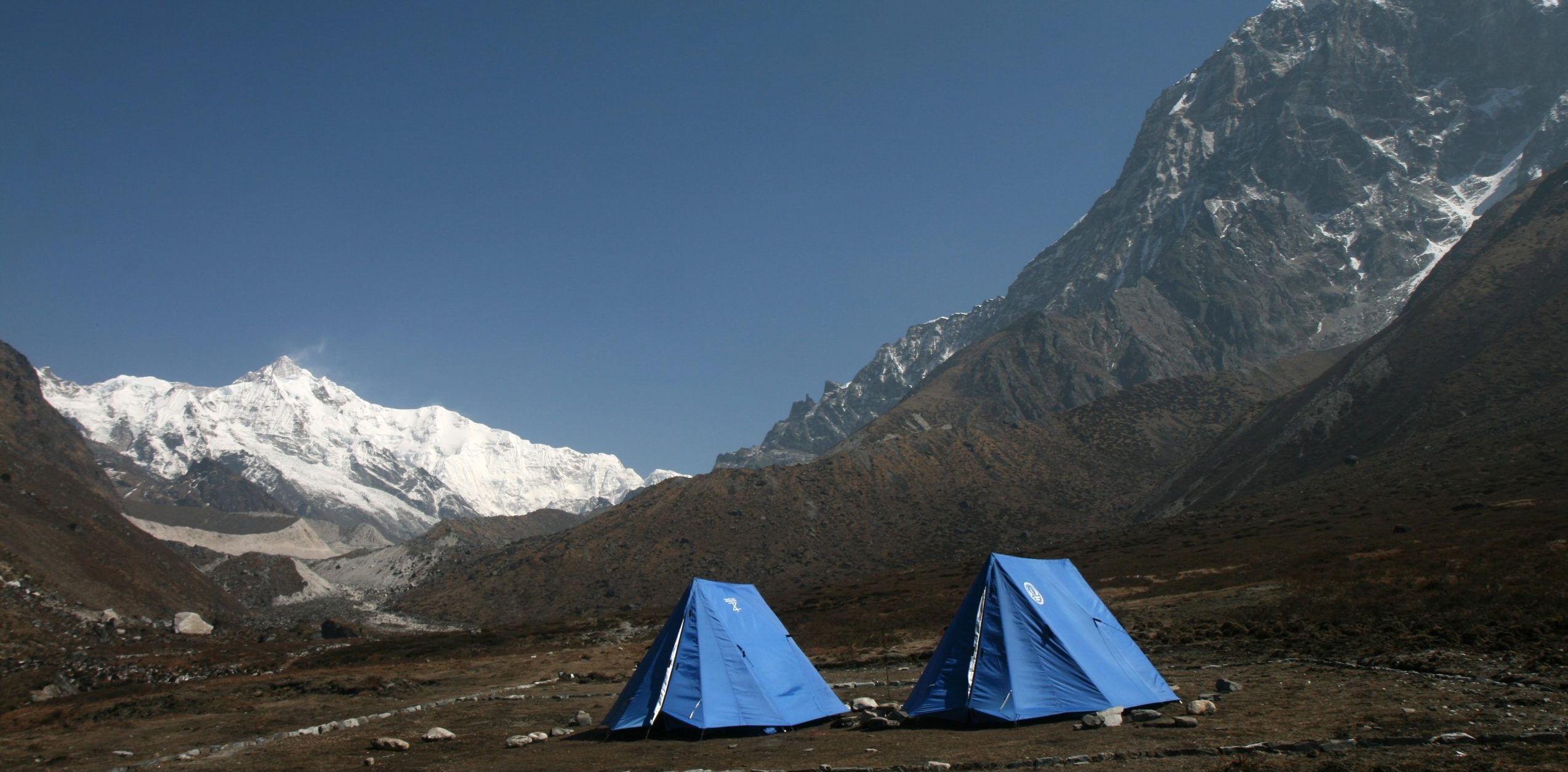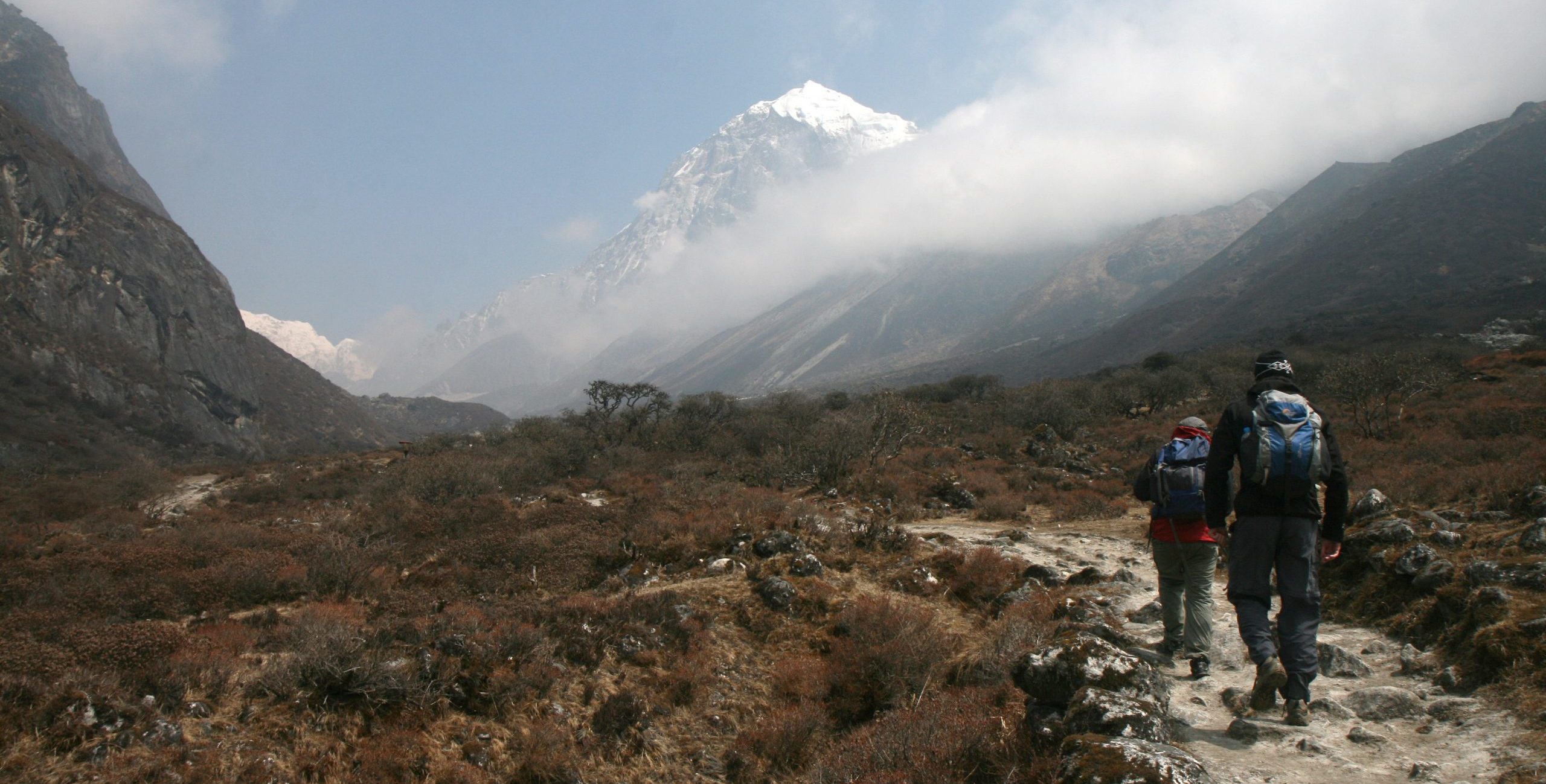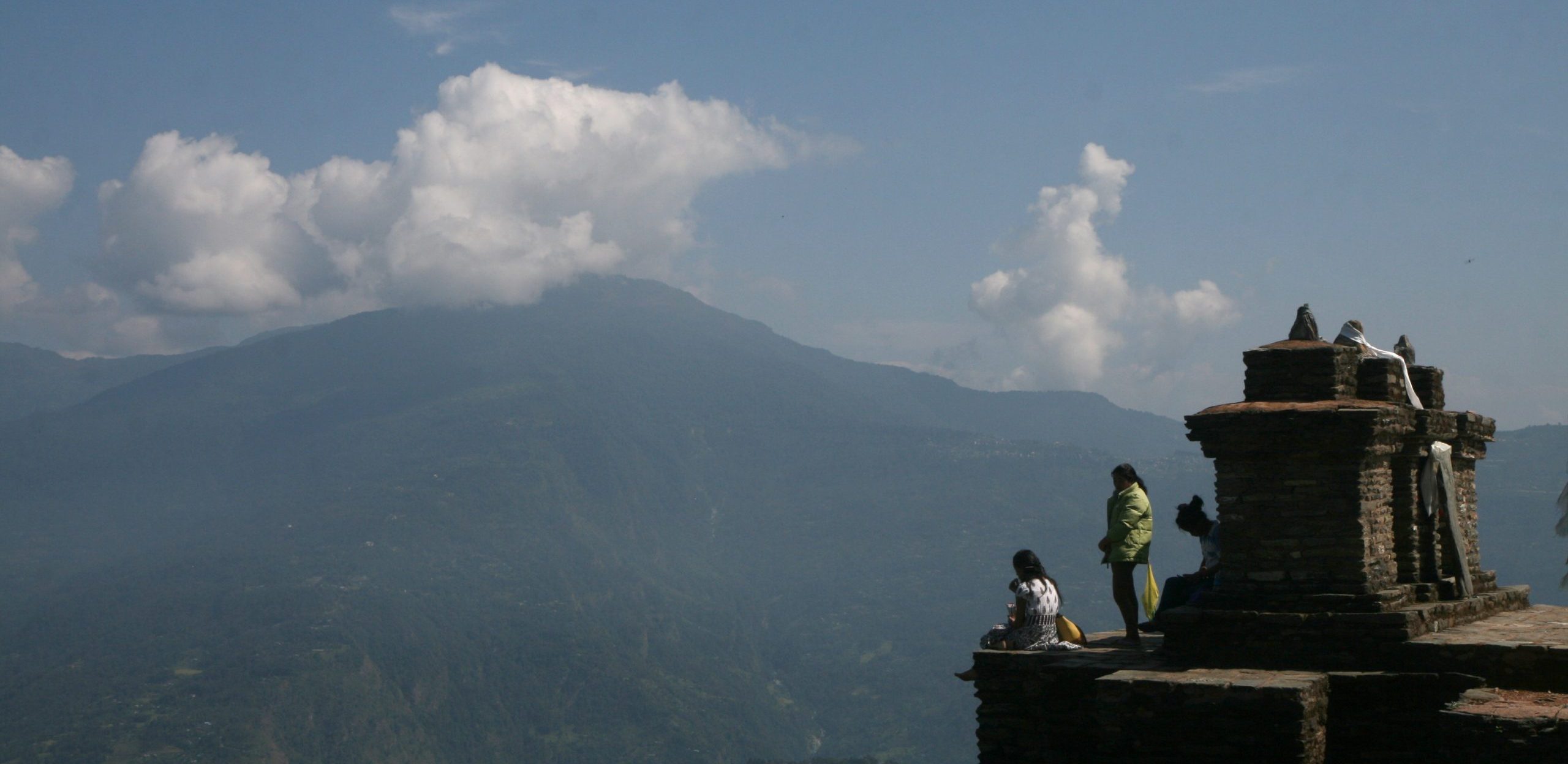SIKKIM – TREKKING AND HIKING

The bad news regarding trekking in Sikkim first: there are various restrictions/regulations. You are not allowed to just shoulder your backpack and start trekking. The following rules apply:
- There must always be an agency involved that provides you with at least one guide.
- The minimum number of people in a trekking group is 2.
- A permit must be applied for. Fortunately, this is not very complicated.
However, the good news follows immediately: trekking in Sikkim is absolutely worthwhile! The landscape is beautiful, varied and impressive, the tours are not overcrowded, the relationship with the accompanying team is uncomplicated and friendly and you come back with a backpack full of wonderful memories.
How does such a tour work and who takes partKlicken?
There is an accompanying team consisting of a guide, cook and those responsible for the luggage. Depending on the area, horses, dzos (a mixture of yak and cow), porters or a mixture of these are used for the luggage. You discuss the plan for the day with the guide and hike together with them. This means that you have a tour plan set by us, which can be flexibly adapted to the weather, terrain conditions and physical condition. The hikers are the measure of all things, not the tour plan.
The rest of the team sets off earlier or later regardless of the hiking group and prepares everything for the meals and overnight camp. It is agreed in advance whether you would prefer a warm lunch (it is warm, tastes better, but you are tied to the kitchen team in terms of time and location) or a packed lunch (it is cold, but you are flexible in terms of time and location). We take a light table and chairs with us, as the ground is often too uncomfortable to sit on.
So you always carry a daypack with you, while the large luggage is transported out of reach during the day.
You sleep in a (rainproof) tent. The only exception is the Singalila-Darjeeling trek, where there are also pleasant lodges to choose from. Sometimes you have to get up very early to watch the sunrise from a particularly beautiful spot – an unforgettable experience.

Meals
During the trek, vegetarian and varied food is served, as much fresh food and as little tinned food as possible. The cooking tends to be international. If you absolutely need meat, take hard sausages or similar with you from home. If you have certain food intolerances, have to observe food regulations or have special preferences/dislikes, please let us know in advance so that we can shop accordingly. We will take enough food with us so that even the particularly hungry will always be satisfied and you will have food for a possible extra day. Water is boiled daily in the morning and evening and filled into the bottles you bring with you.
Trekkingtime
In winter it is very cold and snowy, in summer the monsoon rains – so the best trekking times are in between. From mid-March to the beginning of June and mid-September to the end of November are the best months, although you can also expect snow and/or rain. It can also be cold to very cold in the higher regions, especially at the beginning and end of the season. Spring has the advantage of blossom (especially rhododendrons) and fewer trekkers, but the disadvantage of increased poor visibility (but above the tree line it is almost always good) and possibly impassable routes due to snow. In autumn, the visibility is clearer, but there are also significantly more people on the trail.
Packlist
- Big bag, preferably rainproof (backpack also works)
- Sleeping bag down to -10° and/or (fleece) inlet
- Well-worn ankle-high trekking boots, preferably well waxed or Gore-Tex
- warm jacket (e.g. down), warm trousers, thick jumper
- warm underwear
- Umbrella and/or rain jacket and trousers
- Sun cream, lip protection with SPF, sun hat, sunglasses
- woollen hat, scarf, gloves
- Outdoor shoes, trainers or trekking sandals as a spare
- Hiking socks
- Day rucksack for camera, water bottle, jumper etc.
- Two 1-litre drinking bottles
- (Aluminium) seat cushion for dry, warm and clean bottom
- Head torch
- towel
- Camera with sufficient batteries (no charging facilities)/power bank
- Hot water bottle for the sleeping bag if necessary
- Passport photos and copies of passports can be purchased quickly and cheaply in Gangtok
Tipp
If you have never/rarely trekked before and are therefore lacking in equipment/clothing, you can stock up very well in appropriate shops in Gangtok or Darjeeling. The quality of the goods there may not be very good, but they are usable enough to last at least one trek or have a lifespan of 5 years and are also quite inexpensive.

Treks
In addition to those listed here, there are other options that we would be happy to discuss with you!
| Trek | von/bis | Dauer | Schwierigkeit |
| Dzongri-Trek | Yuksom/Yuksom | 4-6 days | 2 |
| Goecha-la-Trek | Yuksom/Yuksom | 8 days | 2 |
| Singalila (Sikkim-area) | Yuksom/Uttarey | 14-15 days | 3 |
| Singalila (Darjeeling-area) | Maneybanjang/Rimbik | 4-8 days | 2 |
| Green Lake | Lachen/Lachen | 12 days | 3 |
| Lhabha-Trek | Lachen/Lachung | 4-8 days | 2 |
| “Buddhist-Trek” | Pelling/Ravangla | 5 days | 1-2 |
| HMI-Base-Camp-Trek | Yuksom/Yuksom | 9-12 days | 2 |
| Tosar-Trek | Tolung/Mangan | 4-5 days | 2 |
Most of the treks are variable in terms of route layout and sometimes also in terms of routing, which results in different durations.
Daytreks
There are shorter tours in the form of walks, such as to the ruins of the old capital Rabdentse, but also tours lasting several hours in the mountains, e.g.
Maenam Hill
Yuksom -> Kecheopalri-Lake
Dubdi-monastery
Ravangla-Dalling-Kewzing
Tinjure
Barsay Rhododhendron
Rinchenpong

